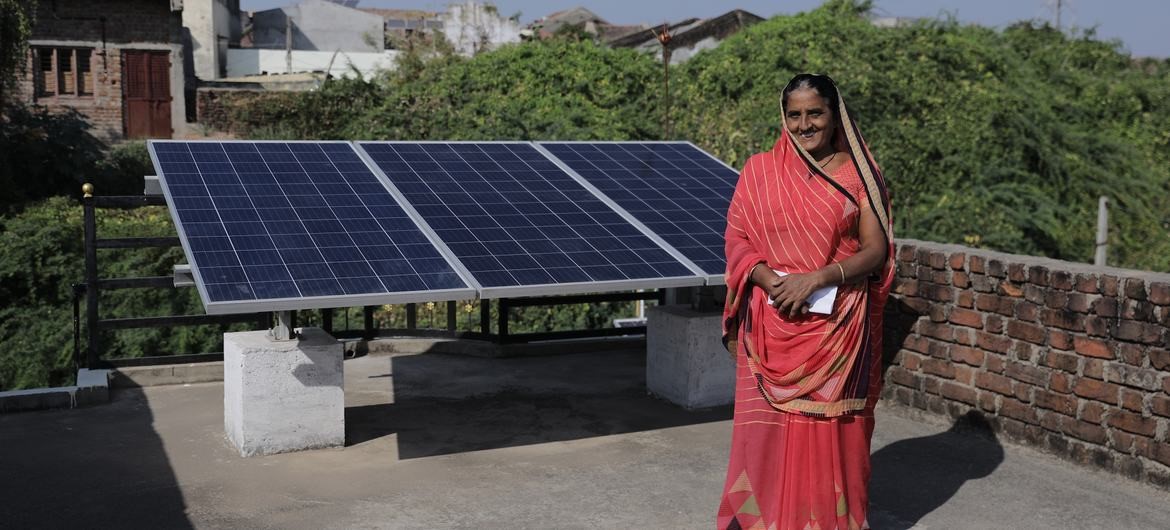Description

Disclaimer: Copyright infringement not intended.
Context
- Global solar generation surged in 2023, with India experiencing remarkable growth, surpassing Japan to become the world's third-highest producer of solar power.
Global Solar Generation
- Solar generation worldwide in 2023 was over six times higher than in 2015, indicating significant growth in renewable energy adoption.
- India witnessed a 17-fold increase in solar generation compared to 2015, reflecting a substantial leap in solar power production.
India's Solar Power Achievement
- India generated 113 billion units (BU) of solar power in 2023, outpacing Japan's production of 110 BU.
- This achievement propelled India to the third position in global solar power production, overtaking Japan.
Installed Power Capacity Rankings
- In terms of installed power capacity, which encompasses both renewable and non-renewable sources, India ranks fifth globally, with 73 gigawatts (GW).
- Japan, with a capacity of 83 GW, holds the third position in installed power capacity rankings.
Discrepancy between Installed Capacity and Actual Generation
- The installed power capacity reflects the potential power production capability, including solar energy.
- However, actual power generation can vary due to fluctuations in demand and local circumstances.
- This disparity between installed capacity and actual generation underscores the need to address challenges in harnessing solar energy effectively.
Discrepancy in India's Solar Power Utilization
- Despite the significant share of solar power in India's installed electricity capacity (18%), its contribution to actual power generation is relatively low, at 6.66%.
- This gap between potential and actual solar power utilization highlights the importance of addressing operational and infrastructural challenges.
Insights from Niti Ayog Data
- Data from Niti Ayog, a government think-tank, indicates the discrepancy between installed capacity and actual solar power production.
- As of May 2024, solar power constituted only 6.66% of India's total electricity production, underscoring the need for enhanced efficiency and utilization of solar energy resources.

Continuing Growth of Solar Power and Renewable Energy
Factors Contributing to India's Overtaking of Japan
- In 2023, Japan experienced a 2% decrease in power demand, allowing India to surpass it in solar power production.
- The sustainability of this trend remains uncertain, as India would need to more than double its current solar production to exceed the United States' solar production of 228 BU and claim the second spot.
Global Solar Power Landscape
- China remains the world's leading producer of solar power, generating 584 BU in 2024, surpassing the combined solar production of the United States, Japan, Germany, and India.
- Renewables accounted for 30% of global electricity production in 2023, a significant increase from 19% in 2000, driven primarily by solar and wind power expansion.
China's Dominance in Renewable Energy
- China played a pivotal role in the growth of renewables, contributing 51% of the additional global solar generation and 60% of new global wind generation in 2023.
- Combined with nuclear energy, low-carbon sources accounted for nearly 40% of global electricity generation in 2023.
Projections for Fossil Fuel Generation
- Ember forecasts a decline in fossil fuel generation in 2024, with this trend expected to persist in subsequent years.
- This suggests that 2023 may have marked the global "peak" in fossil fuel production, signaling a shift towards renewable energy sources.
Acceleration of Solar Power Adoption
- Global solar generation in 2023 surpassed levels from 2015 by more than sixfold, with India experiencing a 17-fold increase during the same period.
- The share of solar generation in India's electricity rose from 0.5% in 2015 to 5.8% in 2023, indicating a significant acceleration in solar power adoption.
Importance of Clean Electricity
- Increasing clean electricity not only reduces carbon emissions but also meets rising electricity demand in an increasingly electrified economy.
- Decoupling economic growth from emissions is crucial for tackling climate change, highlighting the importance of transitioning to renewable energy sources.
Conclusion
- The growth of solar power and renewable energy signifies a paradigm shift towards sustainable energy production globally.
- India's ascent in solar power production reflects its commitment to renewable energy adoption.
- However, sustained efforts are needed to accelerate the transition to clean electricity and mitigate the impacts of climate change on a global scale.
Must Read Articles:
Rooftop Solar Programme: https://www.iasgyan.in/daily-current-affairs/rooftop-solar-programme#:~:text=When%20the%20sun%20shines%20onto,a%20residential%20or%20commercial%20building.
Pradhan Mantri Suryodaya Yojana: https://www.iasgyan.in/daily-current-affairs/pradhan-mantri-suryodaya-yojana
https://www.iasgyan.in/daily-current-affairs/indias-solar-power-an-overview
|
PRACTICE QUESTION
Q. Discuss the challenges in harnessing solar energy effectively, as highlighted by the disparity between installed capacity and actual generation. How can these challenges be addressed to facilitate the optimal utilization of solar energy resources? Illustrate with examples and suggest policy measures to overcome the identified obstacles.
|
SOURCE: THE HINDU














